
Eleocharis is a virtually cosmopolitan genus of 250 or more species of flowering plants in the sedge family, Cyperaceae. The name is derived from the Greek words ἕλειος (heleios), meaning "marsh dweller," and χάρις (charis), meaning "grace." Members of the genus are known commonly as spikerushes or spikesedges. The genus has a geographically cosmopolitan distribution, with centers of diversity in the Amazon Rainforest and adjacent eastern slopes of the South American Andes, northern Australia, eastern North America, California, Southern Africa, and subtropical Asia. The vast majority of Eleocharis species grow in aquatic or mesic habitats from sea level to higher than 5,000 meters in elevation.

Machaerina juncea, commonly known as bare twig-rush or tussock swamp twig rush, is a sedge in the sedge family, Cyperaceae, that is native to Australia, New Zealand, and New Caledonia.
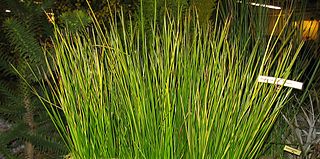
Machaerina rubiginosa, commonly known as soft twig rush, flat leaf twig rush or common twig rush, is a flowering plant in the sedge family, Cyperaceae, that is native to Asia and the Pacific.
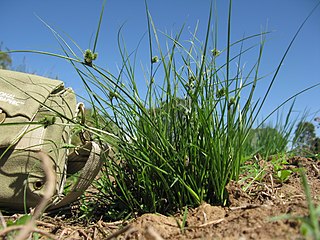
Carex inversa, commonly known as knob sedge, is a species of sedge of the family Cyperaceae that is native to parts of Australia and New Zealand and has also been introduced into Great Britain.

Carex pumila, commonly known as strand sedge or spreading sedge, is a species of sedge of the family Cyperaceae.
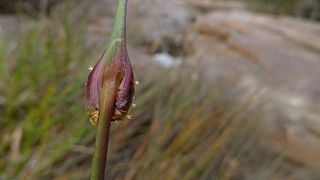
Chorizandra cymbaria, commonly known as heron bristle rush or heron bristle sedge, is a sedge of the family Cyperaceae that is native to Australia.
Cyperus alterniflorus is a sedge of the family Cyperaceae that is native to Australia.

Cyperus compressus, commonly known as annual sedge, is a sedge of the family Cyperaceae that has a wide distribution throughout countries with warmer climates. It is found in tropical areas of Africa, Asia and the Americas.
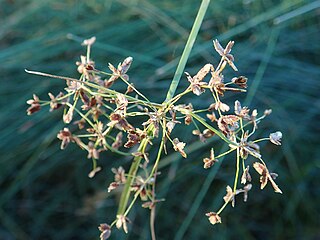
Cyperus concinnus is a sedge of the family Cyperaceae that is native to Australia, and found in New South Wales, Queensland, the Northern Territory, South Australia, Victoria and Western Australia.
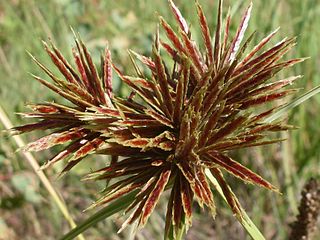
Cyperus congestus, commonly known as dense flat-sedge or clustered flat-sedge, is a sedge of the family Cyperaceae that is native to southern Africa mostly in South Africa, Lesotho and Namibia.
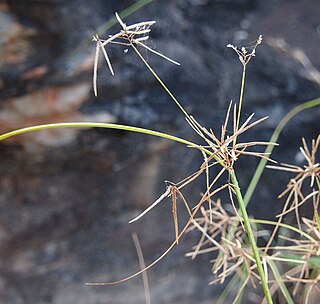
Cyperus dactylotes is a sedge of the family Cyperaceae that is native to all of mainland Australia except for Victoria.
Cyperus hamulosus is a sedge of the family Cyperaceae. It is native from Bulgaria east to Mongolia, and from Morocco in north Africa down to Namibia in the south. It has also been introduced to western parts of Australia.
Cyperus nutans is a sedge of the family Cyperaceae that is native to Australia, China, India, Bangladesh, south-east Asia, Malaysia, India, and Indonesia.

Cyperus vaginatus, commonly known as stiff-leaf sedge or stiff flat-sedge, is a sedge of the family Cyperaceae that is native to Australia.
Cyperus victoriensis, also known as channel nut grass is a sedge of the family Cyperaceae that is native to all the states and territories of mainland Australia.
Cyperus vorsteri is a sedge of the family Cyperaceae native to KwaZulu-Natal in South Africa.

Eleocharis ochrostachys, commonly known as spike rush, is a sedge of the family Cyperaceae that is native to Australia and Asia.
Eleocharis pallens, commonly known as pale spikerush, is a sedge of the family Cyperaceae that is native to Australia.

Eleocharis sphacelata, commonly known as tall spikerush, is a sedge of the family Cyperaceae that is native to Australia and New Zealand.
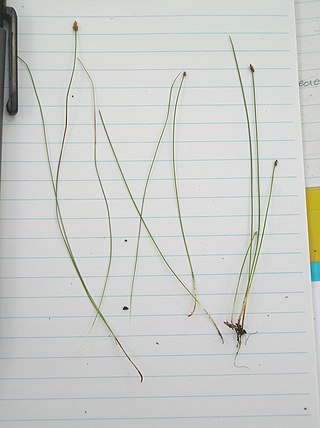
Eleocharis nitida is a species of flowering plant commonly called neat spikerush, it is a member of the sedge family Cyperaceae.














